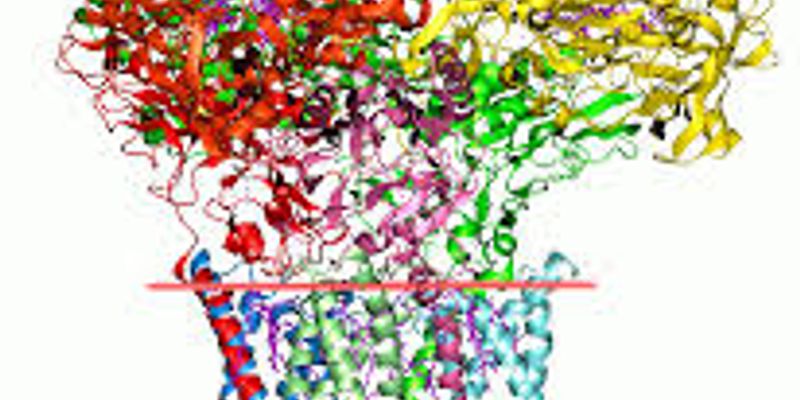Structural Bioinformatics
Structural Bioinformatics: is the branch of bioinformatics that is related to the analysis and prediction of the three-dimensional structure of biological macromolecules such as proteins, RNA, and DNA.
-
SEP 12, 2019 | 6:00 AMWith humans pushing to live further off Earth for longer periods of time, it is increasingly important to understand the changes that occur in biological systems during spaceflight whether th...Speaker: Jonathan Galazka, PhD , Daniela Bezdan, PhD , Peng Jiang, PhDPresented at: Microbiology & Immunology Virtual Event Series 2019
MAY 09, 2019 | 9:00 AMRelease of the first human genome assembly was a landmark achievement, and after nearly two decades of improvements, the current human reference genome (GRCh38) is the most accurate and compl...MAY 09, 2019 | 7:30 AMC.E. CREDITSRecent technological advances as well as longitudinal monitoring not only have the potential to improve the treatment of disease (Precision Medicine) but also empower people to stay healthy (...MAY 08, 2019 | 1:30 PMRecent improvements in sequencing chemistry and instrument performance combine to create a new PacBio data type of highly accurate (HiFi), long insert reads. Increased read length and improve...Speaker: Jonas Korlach, PhDMAY 08, 2019 | 10:30 AMC.E. CREDITSOne of the central tenants of biology is that our genetics—our genotype—influences the physical characteristics we manifest—our phenotype. But with more than 25,000 human ge...APR 25, 2019 | 6:00 AMTo reduce the global burden diseases causes by infectious disease, including parasites and bacteria, scientists need better information about mechanisms of virulence, immune evasion, and drug...Speaker: Meredith Ashby, PhDDEC 18, 2018 | 10:00 AMDATE: December 18, 2018TIME: 10:00am PST, 1:00pm EST Precision medicine anticipates the clinical application of whole-genome sequencing (WGS), as evidenced by the...OCT 11, 2018 | 12:00 PMLung cancer is the leading cause of cancer-related mortality worldwide. Large-scale sequencing studies have revealed the complex genomic landscape of NSCLC and genomic differences between lun...Speaker: Nicholas McGranahan, PhDOCT 11, 2018 | 10:30 AMTwo projects looking at novel approaches to targeting inflammatory breast cancer will be presented. Inflammatory breast cancer (IBC) is a unique, understudied, and most lethal subtype account...Speaker: Kevin Williams, PhDOCT 11, 2018 | 9:00 AMThe oncogenic transcription factor c-MYC (MYC) is deregulated, and often overexpressed, in more than 50% of cancers. MYC deregulation is associated with poor prognosis and aggressive disease,...Speaker: Jason De Melo, PhDOCT 11, 2018 | 7:30 AMIn the past two decades a small number of infrequently dividing cells have been proposed as the source of multi-drug resistance during cancer treatment. These cells identified by their expres...Speaker: Krastan Blagoev, PhDOCT 11, 2018 | 6:00 AMPacBio Sequencing simultaneously provides long sequence reads, high consensus accuracy, minimal sequence bias, and methylation detection. I will highlight new advances and updates on applying...Speaker: Jonas Korlach, PhDOCT 10, 2018 | 12:00 PMTo date the anatomic extent of tumor (TNM-classification) has been by far the most important factors to predict the prognosis of cancer patients. However, this classification provides limited...Speaker: Jerome Galon, PhDOCT 10, 2018 | 12:00 PMRNA sequencing unlocks the mysteries hidden in the transcriptome. Whether your goal is gene expression analysis, gene fusion analysis, SNP analysis or miRNA expression analysis, achieving hig...Speaker: Jonathan Shaffer, PhD, MBAOCT 10, 2018 | 9:00 AMHigh-throughput screening is widely useful in identifying genes and pathways that drive changes in cell behavior such as cell cycle regulation, metastasis, and drug resistance. Millipor...Speaker: Andrew Ravanelli, PhDOCT 10, 2018 | 9:00 AMIn prior work, we have pursued how tumor reactive monoclonal antibody (mAb), together with activators of innate immune cells, like NK cells, can augment antibody dependent cell-mediated cytot...Speaker: Paul Sondel, MD, PhDOCT 10, 2018 | 7:30 AMMolecular analyses of cancer biology have tended to segregate between a focus on nucleic acids – DNA, RNA and their modifications – and a focus on proteins and protein function. P...Speaker: Karin Rodland, PhDOCT 10, 2018 | 6:00 AMUnderstanding the immune repertoire is an important aspect of immuno-oncology research, which can be used to gather insights into the function and overall status of the immune system. We have...Speaker: Samuel Rulli, PhDOCT 03, 2018 | 12:00 PMAll forms of life require immune systems to stave off infection from viruses and other pathogens. In bacteria and archaea, clustered regularly interspaced short palindromic repeats (CRISPR) a...SEP 13, 2018 | 1:30 PMPacBio Sequencing has been recognized as the gold standard in microbial sequencing due to simultaneously providing long sequence reads (genome contiguity), high consensus accuracy (genome acc...Speaker: Jonas Korlach, PhDSEP 13, 2018 | 1:30 PMThe soil microbiome can produce, resist, or degrade antibiotics and even catabolize them. Resistance genes are widely distributed in the soil and may act as a reservoir for pathogen antibioti...SEP 13, 2018 | 12:00 PMThe greatest need in agriculture this century is to mitigate impacts of abiotic (drought, temperature, salinity) and biotic (pathogens, pests) stresses on crop plants. Efforts over the...SEP 13, 2018 | 12:00 PMSexually transmitted diseases remain a major global public health burden despite the availability of effective prevention strategies to diagnose and treat bacterial STDs. Concerning tre...SEP 13, 2018 | 12:00 PMWhile rapid identification of pathogens, novel therapeutic interventions, and passive immunization have critical roles in disease control, none can substitute for pre-existing protective immu...
SEP 12, 2019 | 6:00 AM
With humans pushing to live further off Earth for longer periods of time, it is increasingly important to understand the changes that occur in biological systems during spaceflight whether th...
Speaker:
Jonathan Galazka, PhD
, Daniela Bezdan, PhD
, Peng Jiang, PhD
Presented at: Microbiology & Immunology Virtual Event Series 2019
MAY 09, 2019 | 9:00 AM
Release of the first human genome assembly was a landmark achievement, and after nearly two decades of improvements, the current human reference genome (GRCh38) is the most accurate and compl...
MAY 09, 2019 | 7:30 AM
C.E. CREDITS
Recent technological advances as well as longitudinal monitoring not only have the potential to improve the treatment of disease (Precision Medicine) but also empower people to stay healthy (...
MAY 08, 2019 | 1:30 PM
Recent improvements in sequencing chemistry and instrument performance combine to create a new PacBio data type of highly accurate (HiFi), long insert reads. Increased read length and improve...
Speaker:
Jonas Korlach, PhD
MAY 08, 2019 | 10:30 AM
C.E. CREDITS
One of the central tenants of biology is that our genetics—our genotype—influences the physical characteristics we manifest—our phenotype. But with more than 25,000 human ge...
APR 25, 2019 | 6:00 AM
To reduce the global burden diseases causes by infectious disease, including parasites and bacteria, scientists need better information about mechanisms of virulence, immune evasion, and drug...
Speaker:
Meredith Ashby, PhD
DEC 18, 2018 | 10:00 AM
DATE: December 18, 2018TIME: 10:00am PST, 1:00pm EST Precision medicine anticipates the clinical application of whole-genome sequencing (WGS), as evidenced by the...
OCT 11, 2018 | 12:00 PM
Lung cancer is the leading cause of cancer-related mortality worldwide. Large-scale sequencing studies have revealed the complex genomic landscape of NSCLC and genomic differences between lun...
Speaker:
Nicholas McGranahan, PhD
OCT 11, 2018 | 10:30 AM
Two projects looking at novel approaches to targeting inflammatory breast cancer will be presented. Inflammatory breast cancer (IBC) is a unique, understudied, and most lethal subtype account...
Speaker:
Kevin Williams, PhD
OCT 11, 2018 | 9:00 AM
The oncogenic transcription factor c-MYC (MYC) is deregulated, and often overexpressed, in more than 50% of cancers. MYC deregulation is associated with poor prognosis and aggressive disease,...
Speaker:
Jason De Melo, PhD
OCT 11, 2018 | 7:30 AM
In the past two decades a small number of infrequently dividing cells have been proposed as the source of multi-drug resistance during cancer treatment. These cells identified by their expres...
Speaker:
Krastan Blagoev, PhD
OCT 11, 2018 | 6:00 AM
PacBio Sequencing simultaneously provides long sequence reads, high consensus accuracy, minimal sequence bias, and methylation detection. I will highlight new advances and updates on applying...
Speaker:
Jonas Korlach, PhD
OCT 10, 2018 | 12:00 PM
To date the anatomic extent of tumor (TNM-classification) has been by far the most important factors to predict the prognosis of cancer patients. However, this classification provides limited...
Speaker:
Jerome Galon, PhD
OCT 10, 2018 | 12:00 PM
RNA sequencing unlocks the mysteries hidden in the transcriptome. Whether your goal is gene expression analysis, gene fusion analysis, SNP analysis or miRNA expression analysis, achieving hig...
Speaker:
Jonathan Shaffer, PhD, MBA
OCT 10, 2018 | 9:00 AM
High-throughput screening is widely useful in identifying genes and pathways that drive changes in cell behavior such as cell cycle regulation, metastasis, and drug resistance. Millipor...
Speaker:
Andrew Ravanelli, PhD
OCT 10, 2018 | 9:00 AM
In prior work, we have pursued how tumor reactive monoclonal antibody (mAb), together with activators of innate immune cells, like NK cells, can augment antibody dependent cell-mediated cytot...
Speaker:
Paul Sondel, MD, PhD
OCT 10, 2018 | 7:30 AM
Molecular analyses of cancer biology have tended to segregate between a focus on nucleic acids – DNA, RNA and their modifications – and a focus on proteins and protein function. P...
Speaker:
Karin Rodland, PhD
OCT 10, 2018 | 6:00 AM
Understanding the immune repertoire is an important aspect of immuno-oncology research, which can be used to gather insights into the function and overall status of the immune system. We have...
Speaker:
Samuel Rulli, PhD
OCT 03, 2018 | 12:00 PM
All forms of life require immune systems to stave off infection from viruses and other pathogens. In bacteria and archaea, clustered regularly interspaced short palindromic repeats (CRISPR) a...
SEP 13, 2018 | 1:30 PM
PacBio Sequencing has been recognized as the gold standard in microbial sequencing due to simultaneously providing long sequence reads (genome contiguity), high consensus accuracy (genome acc...
Speaker:
Jonas Korlach, PhD
SEP 13, 2018 | 1:30 PM
The soil microbiome can produce, resist, or degrade antibiotics and even catabolize them. Resistance genes are widely distributed in the soil and may act as a reservoir for pathogen antibioti...
SEP 13, 2018 | 12:00 PM
The greatest need in agriculture this century is to mitigate impacts of abiotic (drought, temperature, salinity) and biotic (pathogens, pests) stresses on crop plants. Efforts over the...
SEP 13, 2018 | 12:00 PM
Sexually transmitted diseases remain a major global public health burden despite the availability of effective prevention strategies to diagnose and treat bacterial STDs. Concerning tre...
SEP 13, 2018 | 12:00 PM
While rapid identification of pathogens, novel therapeutic interventions, and passive immunization have critical roles in disease control, none can substitute for pre-existing protective immu...
























